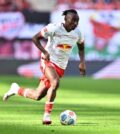- Predicted Arsenal line-up against Wolverhampton Wanderers
- Arsenal face pressure as rivals move for Yan Diomande
- Arsenal in fierce battle to sign Ousmane Diomande
- Arteta gives key injury updates ahead of Wolves clash
- Arsenal keep close watch on Dortmund goalkeeper Ramaj
- Pundit lauds Madueke after strong display vs Club Brugge
- Arsenal eye double swoop to sign Rodrygo Goes & Rafael Leao
- Arsenal showing ‘genuine interest’ in signing Adam Wharton
- [Player ratings] Brugge 0-3 Arsenal: Madueke stars as Gunners cruise
- Arsenal step up efforts to sign Real Madrid’s Arda Guler
Arsenal’s Tactical Evolution: Inverted Fullbacks, the “Eight,” and Standards
Arsenal under Mikel Arteta have built a repeatable way of winning built on structure, role clarity, and a relentless culture. For readers who track tactical trends before placing a wager, https://first.com/sports-betting/premier-league is a quick pit stop for pricing context; what follows explains why certain Arsenal bets can make sense when the starting XI hints at particular patterns.
Inverted fullbacks: why a defender steps inside the midfield line
When Oleksandr Zinchenko joined and Ben White shifted across the back line, Arsenal gained the option for a fullback to move inside next to the No. 6, turning a 4-3-3 out of possession into a 3-2-5 when the ball is theirs. Coaches’ Voice documented how Zinchenko slides beside the pivot to create central overloads, while White or Tomiyasu hold a more conservative lane on the opposite side. That shape lets Arsenal progress through the center, link Gabriel Martinelli on the left, and keep a safety net behind the ball.
Table 1. Classic vs. inverted fullback at Arsenal
| Aspect | Classic fullback | Inverted fullback |
| Starting zone | Touchline, wide lane | Half-space beside the No. 6 |
| First task in build-up | Overlap the winger; provide width | Form a double pivot to outnumber central press |
| Primary link | Wide winger for crosses | Interior triangles with pivot, near-side “eight,” and center-back |
| Risks | Space behind after overlaps | Space outside the CB if turnover occurs; requires smart rest-defense |
| Payoff | Crossing volume, 2v1s wide | Central control, quicker vertical passes, cleaner rest-defense box |
Takeaway: When the left back moves inside, Arsenal often create a back-three plus a midfield pair under the ball. The lopsided picture—left inside, right more reserved—gives Ødegaard extra pockets on the right and creates a strong five-lane occupation up front. The trade-off is clear: lose the ball in a bad spot and the wing behind the inverted fullback can be exposed, which is why Arteta leans on compact spacing and aggressive counter-press.
The “eight” roles: Ødegaard on the right, variations on the left
Arsenal’s two advanced midfielders—the “eights”—do similar jobs in different ways. The right-sided role, usually Martin Ødegaard, is a left-footer playing on the right, linking with Bukayo Saka and shooting after receiving on his stronger foot. Coaches’ Voice highlighted how Ødegaard moved from a classic No. 10 to a right-sided eight in Arteta’s 4-3-3, timing arrivals at the top of the box and combining in tight lanes. On the left, the job evolved: Granit Xhaka turned from sitter to box-runner in 2022/23; later, Kai Havertz added aerial presence, late area arrivals, and a striker-like feel from midfield.
Table 2. Right eight vs. left eight at Arsenal
| Dimension | Right eight (Ødegaard-type) | Left eight (Xhaka → Havertz-type) |
| Body shape & foot | Left-footed on right; open hips to combine & shoot | Predominantly right-footed; arrives late, attacks crosses/cut-backs |
| Typical movement | Drops to help circulate, then pops up between lines for wall passes & shots | Starts higher, runs beyond the striker or pins markers to free the wing |
| Final-third output | Through-balls to Saka, shots from the inside-right channel | Box entries, second-phase shots, far-post runs |
| Off-ball duty | Triggers press with the striker, angles cover to the pivot | Balances pressing with covering the left half-space behind the winger |
| Ideal partners | Overlapping/underlapping right-back and left-to-right switch | An inverting left-back and a wide left winger holding width |
Takeaway: The dual-eight idea works because the profiles differ. The right side supplies pattern play and shots; the left side stretches lines and threatens the penalty area. When a left back moves inside, the left eight can stay high to pin the opposition’s right-back, while Ødegaard benefits from switches that arrive on his stronger foot. That blend showed up across 2022/23 with Xhaka’s new license and in 2023/24 when Havertz logged time as a left-sided midfielder and a hybrid forward.
Standards, not slogans
Arteta’s rebuild has always been as much about standards as shape. Early in his tenure he made “non-negotiables” a public theme—respect, commitment, and passion—which Sky Sports captured on camera in 2021. That messaging has persisted in press conferences when he speaks about intensity and daily habits.
A 2022 Guardian piece on Arsenal’s plan for Manchester United spelled out the manager’s demand for constant running, pressing, and playing high up the pitch—behaviors, not buzzwords. When the group meets that bar, the team’s patterns look sharp and risks feel calculated. When the levels drop, Arteta says so, including Premier League media quotes in 2025 after a draw where he said standards fell. These public markers tell you how to read Arsenal performances beyond the scoreline: tempo, counter-press, and field position come first.
What this means for bettors and analysts
Arsenal’s best days follow a familiar script. An inverted fullback sets the central platform; the five-man front line stretches the pitch; the two eights stagger at different heights; the counter-press kills transitions before they start. Coaches’ Voice and Total Football Analysis both outlined how those parts interlock—Zinchenko’s inward step, White’s balancing act, the box under the ball, and staggered midfield lines that place Ødegaard closer to shooting positions while the left eight makes arrivals near the penalty spot.
From a market angle, team sheets matter. If an inverting left back starts with a left eight who loves late runs, look for sequences where Arsenal funnel play through the inside-left channel before switching to the right for Ødegaard shots or Saka isolations. If the right-back is the one who steps inside instead, expect different rotations: the left winger may receive more true 1v1s while the right side focuses on stability. Those toggles reflect not just a whiteboard plan but the manager’s cultural demands—the “non-negotiables” that keep distances tight and pressing sharp.
Why the model has staying power
The shapes Arteta favors are fashionable, but Arsenal’s version has sticky features. First, role redundancy: if the left back cannot move inside, a right-back like Timber or White can, preserving the 3-2 base. Second, player profiles: the club has added midfielders and defenders who are comfortable under pressure and can pass on the half-turn, which keeps the five-lane attack intact. Third, the culture: press conferences often circle back to standards—when the boss praises the group after a hard-running display or calls out a drop, he is resetting the metronome for the next match. Across seasons, that drumbeat explains why Arsenal’s tactical picture still looks coherent even when personnel or form shifts.
The bottom line
Arsenal’s evolution is not just about drawing arrows on a tactics board. It is about pairing the right build-up shape with complementary midfield roles and a coach who enforces daily habits. When a fullback steps inside and the two eights stagger correctly, Arsenal control the middle, arrive in the box from smart angles, and press with bite after any mistake. For analysts and bettors alike, spotting those ingredients—before kick-off and in the first ten minutes—often tells you where the game is headed next.




